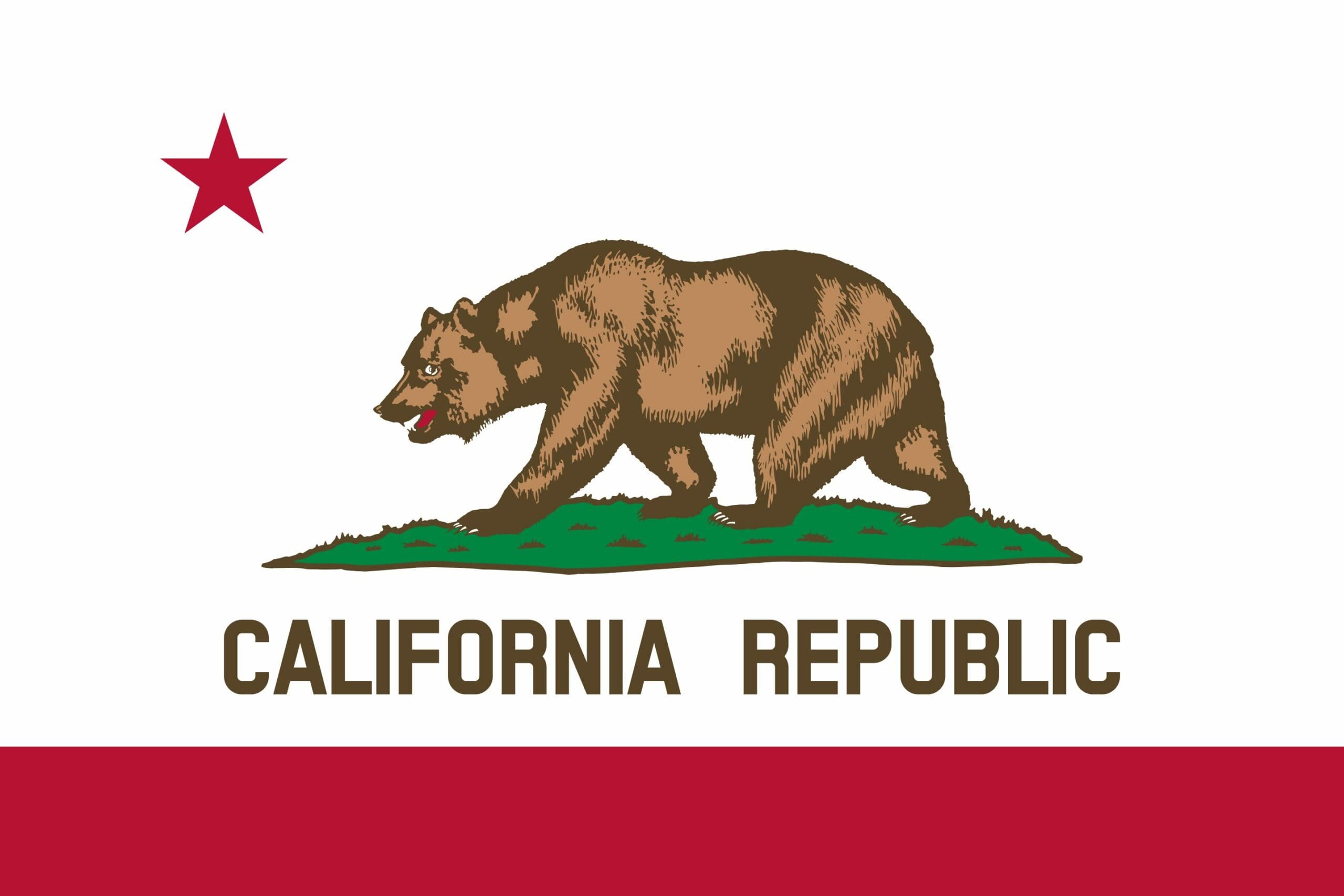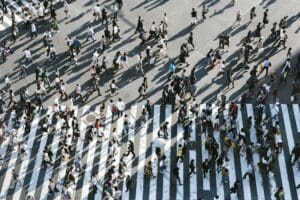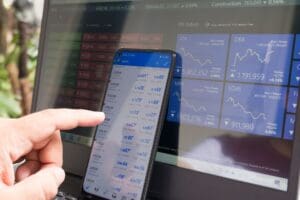$1,000 per month: How would a universal income boost Marin City?
Welcome to the Throughline: A new series about the Bay Area of…
Aside from a national program of reparations for slavery, it’s hard to imagine any single law or policy change that could quickly bring the sort of major public investment and infrastructure that Marin City needs — especially right now, in a country immobilized by a viral pandemic. But there is an idea out there that might help. Something unexpected and different. Something that could fly above the weird and baffling rubble of America right now to deliver some measure of relief to millions. And it may end up having the biggest impact in the places that are the most disempowered — places like Marin City.
It’s called a Universal Basic Income. The idea, more or less, is to give people cash.
Imagine if everybody in America received a monthly paycheck from the government. That’s a UBI.
The payment is “universal,” meaning it goes to rich and poor alike. It’s “basic,” providing a modest income floor; the figure often discussed by advocates is $1,000 per month, or $12,000 per year (the poverty line for a U.S. adult is $12,760), though proposals range from $500 a month to a more generous $2,000. And, crucially, it’s paid in cash, so people can use it however they like, as opposed to a benefit like food stamps.
Though philosophers as far back as Thomas Paine have promoted the idea, and Martin Luther King Jr. wrote in 1967 that a “guaranteed income” would abolish poverty and bring dignity “within reach of all,” the modern UBI movement took root in Europe during the 1970s, embraced as a way to expand the social safety net. Since then, tech entrepreneurs like Elon Musk and former presidential candidate Andrew Yang have pushed UBI as a tool for avoiding massive social unrest if robots one day eliminate millions of jobs.
But in the last few years, activists and scholars have moved beyond the science-fiction scenario, instead promoting UBI as a way of making America better and stronger and fairer right now — to blunt poverty, to increase racial and gender equity, to give workers in poor jobs more power, and to help people stay afloat during the COVID-19 pandemic. And the Bay Area is at the forefront of the movement, a hotbed of research and experimentation.
UBI isn’t just “a robot protection racket,” said the Oakland-based writer Annie Lowrey, who covers economic policy for the Atlantic and wrote the book “Give People Money: How a Universal Basic Income Would End Poverty, Revolutionize Work, and Remake the World.” While cautioning that UBI is far from a magic bullet to solve every problem, she describes it as a powerful principle that could spark “real changes” in families, workplaces and cities.
“There’s a very basic humanitarian spirit behind it,” said Juliana Bidadanure, a philosopher at Stanford who directs the university’s Basic Income Lab. “A decent society is one where we do not let people fall too low.”
The case for a Universal Basic Income begins with acknowledging that America is a brutal country in many ways, though it doesn’t have to be, as Lowrey stresses in her book. (“Poverty in the United States is a choice. … Racism is a choice. The patriarchy is a choice.”) About 40 million Americans live in poverty, and the rate of child poverty, 16%, is significantly higher than in other developed countries like Sweden and the Netherlands. Health care in the U.S. is vastly more expensive. Traditional government benefit programs are hard to use and costly to run. And even though so many Americans are struggling, there’s a broad stigma against people who receive government benefits.
“There is still this idea that because you’re on welfare, you’re deficient,” Bidadanure said. “It’s almost at the cost of your dignity.”
It gets worse: Brutal policies turn out to be expensive. For instance, the Georgetown economist Harry Holzer found that child poverty costs America $700 billion a year in lost productivity, higher crime and higher health care expenditures; other estimates top $1 trillion. If dysfunction costs money, fixing it could ultimately save money, even if you have to spend on the front end to do it. Lowrey estimates in her book that a national UBI program would cost from $1 trillion to $4 trillion per year, depending on how it is configured.
So far, UBI has been tested in a handful of places in America and around the world. One of the largest U.S. pilot projects is in the Central Valley city of Stockton, where the administration of Mayor Michael Tubbs, the city’s first Black mayor, raised money from philanthropists and has distributed $500 a month to 125 residents since February 2019. A 45-year-old single mother replaced her car that was destroyed in an accident and paid bills that had been keeping her awake at night; a 68-year-old woman who lost her job at the Oracle Arena reduced her credit-card debt and bought her son a pair of jeans for his birthday. Tubbs has since leveraged the results to sell other mayors on the virtues of a UBI, and leaders in 12 other cities — including Los Angeles, Atlanta, Pittsburgh and Newark, N.J. — have announced pilots of their own.
Beyond just helping people pay bills, cash payments could start to chip away at bigger barriers that stop many American families from getting ahead, advocates say. Feminist thinkers have pointed out that UBI would compensate women for work that is crucial but too often unpaid, like child care. It may boost people stuck in low-wage jobs, too, allowing them to press for more pay and better conditions.
A UBI could also be a leveling force for many people of color, said Steven McKie and Gabriela Canales, a couple in their twenties who live in the Mission District.
OPTIMISM METER
Cautious: Large-scale adoption of a Universal Basic Income has seemed wildly remote, but the idea is gaining momentum, and the pandemic has shown that cash payments are essential and effective.
MARIN CITY IN NUMBERS
ECONOMICS
22% below poverty level. It’s 14% statewide.
43k median income. In California, it is about $71,000.
RACE
29% White.
29% Hispanic or Latino (of any race).
25% Black or African American.
8% Asian.
Source: United States Census Bureau
Read More
McKie, a cryptocurrency expert and investor, is one of the few Black venture capitalists in the region, leading his own fund called Amentum Capital, and Canales, a doctoral student studying cell biology at UC San Francisco, comes from a Mexican American family. McKie grew up poor in South Carolina and Virginia, he said, and when he first arrived in the Bay Area, he struggled just to afford groceries while people with family wealth seemed to sail forward. And Canales says that while half of her graduate student stipend is eaten up by rent, she is better off than many fellow students who have large tuition debt.
“They’re unable to catch up unless miraculous circumstances happen,” Canales said, likening it to playing the board game Monopoly with a handicap. “Take one player and don’t give them any money in the beginning. See if they can catch up with anybody.” A UBI would simply take Monopoly’s familiar principle — everyone starts out with some money — and apply it to the real world.
The policy, they said, could boost diversity in the tech industry and at institutions like UCSF, giving people from underrepresented groups a little more flexibility and breathing room. You could “fail and fall on your feet and have a safety net,” McKie said.
And when the world throws something unexpected at you, like a deadly virus that smashes the economy, you might really need that money, he said, advancing an argument for UBI that has gained force in the era of COVID-19: A basic income makes people and societies more resilient. There’s new evidence for this: A pair of studies recently found that an expansion in federal aid during the pandemic, in the form of weekly unemployment bonuses and one-time stimulus payments, has stopped the national poverty rate from rising.
Of course, the Bay Area’s high cost of living also raises questions about the effectiveness of a basic income here: Is $1,000 a month per adult really enough to change people’s lives in a place where median rents are among the highest in the country ($3,300 a month for a one-bedroom place in San Francisco)?
Manu Saadia, a Los Angeles writer and the author of “Trekonomics: The Economics of ‘Star Trek,’” said that many upper-middle-class and rich people would probably just stash their basic-income payments in an investment account. But those with less wealth would be forced to spend their cash payments.
In the absence of other fixes to the social safety net, a UBI could “drive inequality even further,” Saadia said. “What good is it if there’s no housing supply? What good is it if there’s no universal health insurance?”
This is where the debate over cash payments becomes more speculative. Most pilot projects are small, testing the waters a few hundred people at a time. “We don’t have something that’s been implemented at scale and to a large number of people,” said Rebecca Hasdell, a postdoctoral research fellow with Stanford’s Basic Income Lab.
While other kinds of benefit programs have provided clues about how a UBI could transform a community, Hasdell and her colleagues say they dream of gathering data on the scale of a city and asking bigger questions: Once people on the margins have cash to pay for basic needs, what changes? Does infrastructure look different? Do people relate to each other differently?
So … what would happen? Take Marin City (3,000 people) and Sausalito (7,000) as an example: How would these cities change if every adult got $1,000 a month, no questions asked?
In front of the Marin City rec center on July 1, Paul Austin met a reporter to go for a drive through Marin City. Hopping into a black van, he lifted a megaphone off the passenger seat.
“That’s for protests,” he said. After the police killing of George Floyd, Austin and three young women activists — Ayana Morgan-Woodard, Lynnette Egenlauf and Mikyla Williams — organized a Black Lives Matter protest, drawing at least 1,000 peaceful demonstrators to Marin City on June 2. A day before, the police chief of nearby Tiburon warned of possible violence at the event and told county residents to avoid it; he later apologized, saying he did not intend to “contribute to a negative narrative” about Marin City. At the rally, one speaker was Sekyiwa Shakur, the sister of rapper Tupac Shakur, who grew up in Marin City and graduated from Tamalpais High School a few years before Austin did. Austin also spoke, delivering a history lesson on his hometown: “It’s been too long that Marin County has kept its knee on Marin City’s neck.”
Paul Austin, above left, at the Marin City Recreation Center, which sports a mural depicting Dr. Martin Luther King Jr. In 1942, above right, a ship-making facility bustled on the Sausalito waterfront, followed by acres of housing, which became Marin City.
Paul Austin, above left, at the Marin City Recreation Center, which sports a mural depicting Dr. Martin Luther King Jr. In 1942, above right, a ship-making facility bustled on the Sausalito waterfront, followed by acres of housing, which became Marin City.
Photo: Yalonda M. James / The Chronicle
Now he piloted the van through the city, stopping at the sites of various civic bruises. Behind a public K-8 school, Bayside Martin Luther King Jr. Academy, he pointed out a baseball field in disrepair, overgrown with tall grass and wildflowers but featuring lights for night games. Back on the road, a half mile away, he drove through Golden Gate Village, a public housing project where 80% of the kids in his rec league live; past that, he turned into a grim, half-empty shopping center with a vacant Outback Steakhouse, some retail stores and a Target, which serves as the only grocery store in Marin City.
Exiting the shopping center, he swung south, and the van climbed a steep hill overlooking the bay, into an area that he and his neighbors used to call the Marin City Headlands. The street was lined with townhomes on either side. This was still Marin City, but signs said “North Sausalito.” “That’s the new wording now,” Austin said, laughing — a house in “North Sausalito” sells for more than one in “Marin City.” Further south lay Sausalito proper, where even bigger homes mingled with older, working-class housing.
He circled back through his old Marin City neighborhood, pointing out the homes of Black families he grew up with. Despite a wave of gentrification, he said, many families are still here, hanging on to what they have. He also drove past his own home in Marin City, where he lives with his wife, a public-school principal, and their two young children. They bought it four years ago, further committing themselves to the city and its future.
All in all, the drive revealed a microcosm of the Bay Area: New money, old families, deep divisions. How would a Universal Basic Income land here? A thousand dollars for each adult in Marin City and Sausalito, and two thousand for each couple?
“$2,000 a month, on top of what they’re earning?” Austin asked.
Yes, on top.
“$24,000 a year, for you and your wife?”
He exhaled.
You set it aside for your kids, he said. To help them get ahead a little bit.
That was his first thought, but then others flowed.
Full-time teachers, he said, would certainly appreciate the money — many struggle to pay Bay Area rent on their low salaries — and so would women who work as “paraprofessional” school aides and keep the schools running. And what about people who cook and sell food on the side? $2,000 a month could be their seed money to start a local eatery — maybe one in the barren shopping center.
He also envisioned the impact of cash payments on working families. “You shouldn’t be living check to check,” he said. “You see bills that turn pink. You get used to seeing the lights get turned off. It becomes your norm because that’s what you grew up in.” But that kind of stress isn’t normal in wealthier places.
Some of the best evidence about the impact of cash payments on a community comes from a 1970s experiment in Canada. The government offered a guaranteed income to all 12,500 residents of a rural town called Dauphin, and although political disagreements stopped the program prematurely, the economist Evelyn Forget later re-discovered and mined the data. She found that the money helped more kids complete high school, allowed working mothers to take time off at the births of their children and made people healthier (visits to doctors and mental-health providers decreased). And the primary earners in Dauphin continued to work about the same amount as before.
So if a basic income program proved effective in Marin City, you wouldn’t only see less homelessness and poverty, fewer evictions and more students graduating from high school. You’d also see the difference written across people’s bodies: After 50 years, residents on average may literally be taller, since malnutrition stunts growth, and may have longer life spans too.
There’s even a chance that the cash payments would change perceptions of Marin City in wealthier parts of the county. This seemed to happen in the Canadian town of Dauphin during the 1970s, according to Bidadanure and Hasdell: People stopped looking at government assistance through a moral lens. It suddenly got harder to judge those who received money because everyone was receiving it.
A jungle gym outside of Manzanita Elementary School which has been permanently shut down in Marin City, California on Tuesday, March 31, 2020.
A jungle gym outside of Manzanita Elementary School which has been permanently shut down in Marin City, California on Tuesday, March 31, 2020.
Photo: Gabrielle Lurie / The Chronicle
In Marin City, Austin stopped the van at George “Rocky” Graham Park, a point of community pride. First built in the 1940s, the park had sunk into neglect, but in 2015, the Marin City Community Services District, where Austin worked at the time, led an effort to revive it, transforming the space with new playground equipment, turf and an amphitheater. They named the park after a Marin City sports coach and activist who was killed in a dispute in 1978.
Next to a slide, a boy was watching his younger sister play. Austin recognized him and said hello; the boy waved.
The boy was an incoming junior at Tamalpais High School, Austin said, and he was stuck providing child care for his own sibling. Austin knows a lot of bright kids in that position, he said — they aren’t free to take summer jobs that create opportunities. With a basic income, their parents could afford some day care.
This is the thing about a UBI: It’s not magic. It won’t fix everything. But it’s a start. It’s simple. It’s freeing. It could let in some surprising kinds of light. And right now, we need that.
“You know, there’s so many people in distress,” Austin said.
He shook his head and squinted as the wind picked up in the park. Thinking about UBI had his mind going in all kinds of directions.
“I mean, this could be so,” he said. “Just imagine.”
Jason Fagone is a San Francisco Chronicle staff writer. Email: jason.fagone@ sfchronicle.com Twitter: @jfagone





















